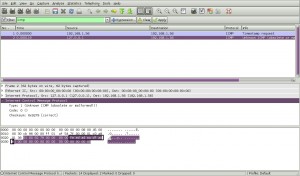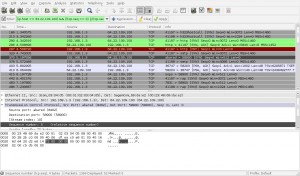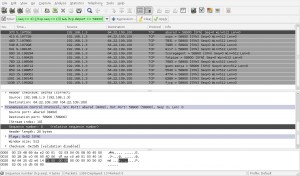18/05/2012
Η πρώτη απόφαση λήψης τεχνολογικών μέτρων παρεμπόδισης της πρόσβασης χρηστών σε ιστοσελίδες
Από δελτίο τύπου του Οργανισμού Πνευματικής Ιδιοκτησίας:
…στις 16 Μαΐου 2012 δημοσιεύθηκε η απόφαση 4658/2012 του Μονομελούς Πρωτοδικείου Αθηνών, η οποία έκανε δεκτό αίτημα οργανισμών συλλογικής διαχείρισης δικαιωμάτων επί μουσικών και οπτικοακουστικών έργων να υποχρεωθούν εκτός άλλων οι ελληνικές εταιρίες παροχής υπηρεσιών σύνδεσης στο διαδίκτυο να λάβουν τεχνολογικά μέτρα προκειμένου να καταστεί αδύνατη η πρόσβαση των συνδρομητών τους σε διαδικτυακές τοποθεσίες μέσω των οποίων πραγματοποιείται παράνομη παρουσίαση και ανταλλαγή έργων. Η απόφαση εφαρμόζει ουσιαστικά για πρώτη το άρθρο 64 Α του ν. 2121/1993 που ενσωματώνει πρόβλεψη Οδηγίας της Ευρωπαϊκής Ένωσης για τη δυνατότητα λήψης ασφαλιστικών μέτρων κατά των διαμεσολαβητών (παρόχων υπηρεσιών διαδικτύου), οι υπηρεσίες των οποίων χρησιμοποιούνται από τρίτο για την προσβολή του δικαιώματος του δημιουργού ή συγγενικού δικαιώματος. Παρόμοιες αποφάσεις έχουν ήδη εκδοθεί σε άλλα κράτη μέλη της Ευρωπαϊκής Ένωσης και αποσκοπούν στην προστασία της πνευματικής ιδιοκτησίας στο διαδίκτυο χωρίς να θίγονται τα δικαιώματα των χρηστών….
Την πλήρη απόφαση μπορείτε να την διαβάσετε εδώ: 4658/2012
*Update*
Επειδή το site του ΟΠΙ δεν παρέχει πια την απόφαση, την έχω ανεβάσει εδώ: Απόφαση-του-Πρωτοδικείου-Αθηνών-για-την-αντιμετώπιση-της-διαδικτυακής-πειρατείας
Γιατί είναι σημαντική αυτή η απόφαση για τους χρήστες
Για πρώτη φορά στην Ελλάδα δικαστήριο επιβάλλει συγκεκριμένα τεχνικά/τεχνολογικά μέτρα παρεμπόδισης της πρόσβασης χρηστών σε ιστοσελίδες/servers. Σήμερα μπορεί να είναι μια ιστοσελίδα που παρέχει “πειρατικό” περιεχόμενο και ο ιδιοκτήτης της βγάζει χρήματα μέσω των διαφημίσεων, αύριο μπορεί να είναι ένα site που ο ιδιοκτήτης του δεν βγάζει χρήματα και μεθαύριο ένα πολιτικό site, ένα θρησκευτικό site, ένα blog που διαφωνεί με τις μεθόδους μιας εταιρίας, μιας κυβέρνησης, κτλ. Οπότε πρέπει ως χρήστες να ξέρουμε τι επιβάλλει το δικαστήριο και να δούμε πως εμείς, ως μέλη της κοινωνίας του Internet, μπορούμε να κάνουμε κάτι για να ακυρώσουμε στην πράξη μια τέτοια απόφαση αν πιστεύουμε πως αυτή είναι λανθασμένη.
Τι περιγράφει η απόφαση
Η απόφαση περιέχει μια λεπτομερή τεχνική έκθεση που εξηγεί πως δουλεύει ένα site, ποια πρωτόκολλα χρησιμοποιούνται από τα μηχανήματα των χρηστών/πελατών για να αποκτήσουν πρόσβαση στο site και έπειτα περιγράφει τρόπους να διακοπεί η σύνδεση των χρηστών με ένα site. Οι τρόποι που παρουσιάζονται είναι οι εξής 2:
Ι) Εφαρμογή κατάλληλων φίλτρων στους δρομολογητές (routers) των ISPs ώστε να αποκλειστεί οποιαδήποτε κίνηση καταλήγει σε συγκεκριμένη IP.
ΙΙ) Εφαρμογή κατάλληλης ανακατεύθυνσης, μέσω τροποποίησης των DNS εγγραφών στους nameservers του κάθε ISP ώστε, ώστε τα αιτήματα προς συγκεκριμένα domains να καταλήγουν σε διαφορετικούς ιστοτόπους. Αυτοί οι ιστότοποι θα μπορούσαν να περιέχουν και ένα προειδοποιητικό μύνημα ώστε να καταλαβαίνουν οι χρήστες γιατί δεν έχουν πρόσβαση στο κανονικό site, όπως αναφέρει το η έκθεση.
Από αυτούς τους 2 τρόπους, στην απόφαση επιβάλλεται η χρήση μόνο του τρόπου (I) ως τεχνολογικό μέτρο διακοπής της πρόσβασης στις “παραβατικές” ιστοσελίδες.
Τα προβλήματα της απόφασης
Τα προβλήματα της απόφασης για μένα είναι αρκετά. Κάποια αναφέρονται και στην ίδια την τεχνική έκθεση που περιέχεται στην απόφαση.
Συγκεκριμένα αναφέρει:
Αν και υπάρχουν δυνατότητες παράκαμψης των συγκεκριμένων τεχνικών μέσων από την μεριά των χρηστών του διαδυκτύου, οι τεχνικές αυτές είναι άγνωστες στη μεγάλη πλειονότητα των πελατών (συνδρομητών) των ISP, που είναι οι δυνητικοί επισκέπτες των ιστοτόπων στους οποίους έχει διακοπεί η πρόσβαση.
Θα αναφερθώ μόνο στα πολύ βασικά όμως…
α) Καταρχήν τα sites έχουν αλλάξει IPs. Το www.ellinadiko.com πλέον δεν δείχνει στην IP που αναφέρεται στην απόφαση, για την ακρίβεια δεν δείχνει πουθενά αυτή τη στιγμή, ενώ το www.music-bazaar.com λειτουργεί αλλά δείχνει σε διαφορετική IP. Άρα η εφαρμογή της οδηγίας (Ι) είναι πρακτικά άχρηστη ως προς τους σκοπούς της απόφασης χωρίς πολλά πολλά. Από την άλλη όμως μπορεί να δημιουργήσει προβλήματα πρόσβασης σε άλλα sites που μπορεί αυτή τη στιγμή να φιλοξενούνται σε εκείνες τις IP για τις οποίες πρέπει να μπουν φίλτρα. Άρα αν εφαρμοστεί η απόφαση ως έχει κινδυνεύει να διακοπεί η πρόσβαση στο site μιας ελληνικής ή ξένης εταιρίας ή προσώπου χωρίς να φταίει σε τίποτα! Ακόμα να μην είχαν αλλάξει IPs τα sites αυτά όμως, πάλι προκύπτει πρόβλημα. Η σύγχρονη τεχνολογία, των τελευταίων 15+ ετών, επιτρέπει την φιλοξενία πολλαπλών ιστοτόπων στην ίδια IP μέσω της τεχνολογίας virtual hosting, κάτι που εφαρμόζεται κατά κόρον ώστε να εξοικονομηθούν IPs. Αυτό έχει σαν αποτέλεσμα πως αν αποτραπεί η κίνηση προς μία συγκεκριμένη IP από ένα φίλτρο ενός ISP, τότε παρεμποδίζεται και η κίνηση προς όλα τα υπόλοιπα sites που φιλοξενούνται στην ίδια IP. Άρα υπάρχει πιθανότητα “τιμωρίας” αθώων ανθρώπων που δεν έχουν κάνει απολύτως τίποτα.
β) Η τεχνική έκθεση και η απόφαση περιέχει συγκεκριμένα domains που θα πρέπει να εφαρμοστεί το (II). Αυτό όμως δεν εμποδίζει σε τίποτα τον διαχειριστή της “προβληματικής” ιστοσελίδας να αλλάξει αύριο domain κρατώντας ακριβώς το ίδιο περιεχόμενο. Οπότε εμποδίζοντας την πρόσβαση στους πελάτες πίσω από ένα ISP σε ένα συγκεκριμένο domain δεν καταφέρνεις και πολλά. Ακόμα όμως και να μην αλλάξει domain ο διαχειριστής μιας και υπάρχουν ελέυθεροι nameservers (Google Public DNS, OpenDNS, κ.α) στο Internet, το μόνο που θα είχε να κάνει ο χρήστης θα ήταν να χρησιμοποιήσει αυτούς έναντι των nameservers του ISP του. Άρα πάλι τα τεχνικά μέτρα είναι εντελώς ανεπαρκή ως προς τον σκοπό της απόφασης. Πέραν αυτού και λόγω της προτεινόμενης ανακατεύθυνσης που προτείνει η τεχνική έκθεση τίθεται και ένα θέμα ιδιωτικότητας σε περίπτωση που εφαρμοζόταν το μέτρο (ΙΙ). Λόγω της ανακατεύθυνσης όλοι οι πελάτες θα “πήγαιναν” σε μία νέα ιστοσελίδα που θα ήταν υπό τη διαχείριση (μάλλον?) του ISP, άρα ο ISP αποκτάει πολύ εύκολα πρόσβαση στο ποιός θέλει να επισκεφτεί τον ιστότοπο αυτό. Τίθεται λοιπόν ζήτημα παρακολούθησης της κίνησης των πελατών. Προσωπικά το θεωρώ απαράδεκτο, όπως απαράδεκτο είναι να προσπαθείς να αλλάξεις τον τρόπο που λειτουργεί το internet. Άλλωστε όπως έχει πει ο John Gilmore:
The Net interprets censorship as damage and routes around it
Μετάφραση:
Το Δίκτυο ερμηνέυει τη λογοκρισία ως ζημιά και δρομολογεί (την κίνηση) γύρω από αυτό (ξεπερνώντας την ζημιά)
Τι θα μπορούσαν να κάνουν οι χρήστες για να παρακάμψουν το “πρόβλημα” αν τους επηρέαζε
Σε περίπτωση εφαρμογής του (II), όπως αναφέρθηκε παραπάνω το μόνο που θα είχαν να κάνουν οι χρήστες θα ήταν να αλλάξουν nameservers στο PC/δίκτυο τους. Αυτό εξηγείται αναλύτικά στις σελίδες της Google Public DNS αλλά και του OpenDNS. Τόσο απλά. Είναι υπόθεση 1 λεπτού αν έχει ο οποιοσδήποτε τις οδηγίες μπροστά του.
Σε περίπτωση εφαρμογής της τεχνικής (Ι) και την στιγμή που το site δεν μπορεί για τους Χ λόγους να αλλάξει IP, αυτό που πρέπει να κάνουν οι χρήστες είναι να χρησιμοποιήσουν κάποιον proxy server, ένα VPN ή κάποιο άλλο δίκτυο που δρομολογεί διαφορετικά τις συνδέσεις τους, για παράδειγμα το Tor. Ο ευκολότερος τρόπος να βρει κάποιος δωρεάν proxies στο δίκτυο είναι να ψάξει στο Google, ενώ η αγορά ενός VPN ξεκινά από τα 3€. Η χρήση του tor είναι πλεόν αρκετά απλή και το μόνο που απαιτείται είναι να κατεβάσει κανείς το Tor Browser Bundle και να τρέξει το Vidalia. Όταν κάποιος τρέξει το Vidalia θα ανοίξει ένας νέος browser (Firefox) και έπειτα η δρομολόγηση των πακέτων προς το site που θέλει να επισκευτεί κανείς γίνεται μέσω του Tor δικτύου το οποίο είναι αρκετά δύσκολο να το σταματήσουν οι ISPs. Σίγουρα πάντως η απόφαση ασφαλιστικών μέτρων 4658/2012 δεν είναι ικανή να σταματήσει το Tor ή οποιονδήποτε άλλο από τους παραπάνω τρόπους παράκαμψης του “προβλήματος”.
Τι πρέπει να γνωρίζουν οι χρήστες του Internet
Οι χρήστες του internet πρέπει να γνωρίζουν πως ανά πάσα στιγμή μια τέτοια απόφαση μπορεί να τους αλλάξει τις συνήθειές τους αλλά και να τους κόψει την πρόσβαση από πηγές πληροφορίας που μέχρι τώρα είχαν ελεύθερη πρόσβαση. Για να μην βρεθούν τελευταία στιγμή να αναρωτιούνται τί και πώς πρέπει να φροντίζουν να ενημερώνονται για τους κινδύνους και τα προβλήματα. Είναι μάλιστα επιτακτικό ο ένας χρήστης να ενημερώνει τους άλλους. Γι αυτούς ακριβώς τους λόγους τους τελευταίους 2-3 μήνες έχει ξεκινήσει μια προσπάθεια ενημέρωσης των Ελλήνων χρηστών για τα ψηφιακά τους δικαιώματα, τους κινδύνους που υπάρχουν στο διαδίκτυο, πως προστατεύει κανείς τα προσωπικά του δεδομένα και πως αποφεύγει προσπάθειες εταιρικής ή κρατικής λογοκρισίας μέσω κάποιων παρουσιάσεων που γίνονται στο hackerspace της Αθήνας. Η επόμενη παρουσίαση γίνεται στις 30/05/2012 και αφορά την χρήση του δικτύου Tor. Όσοι ενδιαφέρονται είναι ευπρόσδεκτοι να έρθουν να ακούσουν και φυσικά να ρωτήσουν για τυχόν απορίες που ίσως έχουν σχετικά με την ψηφιακή τους ζωή.
Οργανωθείτε!
Αν σας ενδιαφέρει να παλέψετε και εσείς για τα ψηφιακά δικαιώματα και τις ελευθερίες στην Ελλάδα καλό θα ήταν να διαβάσετε το κείμενο θέσεων του Δικτύου για την Ψηφιακή Απελευθέρωση (Digital Liberation Network) και αν συμφωνείτε να εγγραφείτε στην mailing list του DLN.
 Filed by kargig at 21:06 under Encryption,General,Greek,Internet,Linux,MacOSX,Networking,Privacy
Filed by kargig at 21:06 under Encryption,General,Greek,Internet,Linux,MacOSX,Networking,Privacy
Tags: 4658/2012, access list, censorship, dns redirection, freedom_of_speech, google dns, Greek, hackerspace, Networking, opendns, Privacy, proxy, security, tor, vpn, ανακατεύθυνση, λογοκρισία, ΟΠΙ
 10 Comments | 20,524 views
10 Comments | 20,524 views



